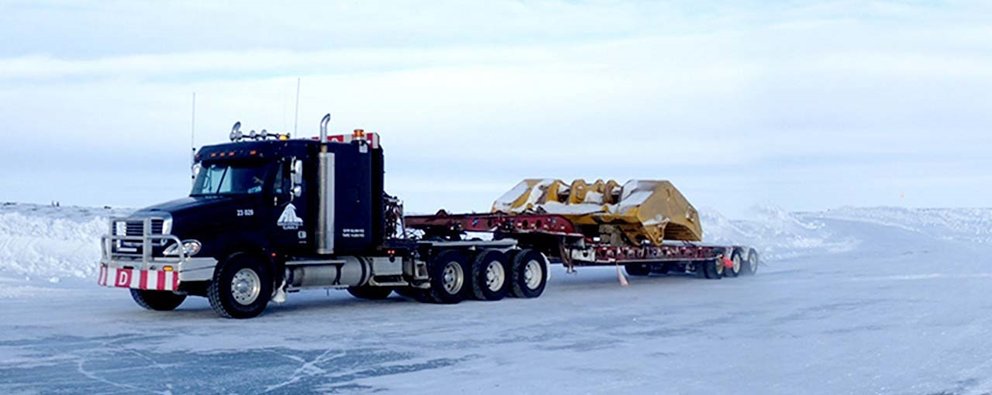- Link to Home page
- Link to News & Insights page
- Link to News from our businesses and markets
News from our businesses and markets
News from our businesses and markets

Detailed planning and a strong commitment to safety across all teams resulted in 4,400 truckloads of fuel, equipment and supplies were successfully hauled to De Beers' remote Canadian mining operations. This was the largest single resupply program for De Beers in Canada in any calendar year.
De Beers relies on winter roads to resupply its two remote diamond mines and a third remote diamond mine currently under construction.
The De Beers Victor Mine is located in the James Bay Lowlands of Northern Ontario, 515 kms north of Timmins. The mine consolidates all freight and fuel in Moosonee before moving materials along 400 kms of ice road to the mine site. The road passes over a variety of small water bodies, muskeg and peat, rivers and tidal water.
The De Beers Snap Lake Mine is 220 km northeast of Yellowknife in the Northwest Territories, while the Gahcho Kué Project site approximately 280 km northeast of Yellowknife and roughly 80 kms away from Snap Lake. Those two sites share a joint winter road with other operations in the NWT, constructing additional spur roads to each De Beers site. The majority of the distance is over large, frozen lakes.
The NWT ice roads opened to heavy traffic on January 30th and closed on March 31st, while the Victor road opened to heavy traffic on February 1st and the final loads arrived at site on March 3rd. All three winter road programs were accomplished without harm to people or the environment.
This year the bulk of the 4,400 loads this year were destined for the Gahcho Kué site, where De Beers and the project’s joint venture partner, Mountain Province Diamonds, are budgeted to invest $400 million during the first full year of construction.
Extreme cold and substantial snow from an extended winter at all three sites meant crews would need to ensure all training requirements were in place for everyone involved in the movement of goods. Drifting snow in open areas is also a common, with the 120 km spur road connecting Gahcho Kué to the main Tibbitt to Contwoyto winter road was a particular challenge this year. Being above the treeline with no other obstacles, high winds are often encountered and can result in two metre-plus snow drifts to form over a 12 hour period.
Gahcho Kué Project
- 1,716 loads of cargo and heavy equipment
- 482 trucks carrying 23.3 million litres of fuel
- 35 backhauls
Snap Lake Mine
- 632 loads of cargo and equipment, including the proof of concept Reverse Osmosis water treatment module
- 1,085 trucks carrying 51.4 million litres of fuel
- 67 backhauls
Victor Mine
- 261 loads of cargo and equipment
- 290 trucks carrying 11 million litres of fuel
- 280 backhauls

